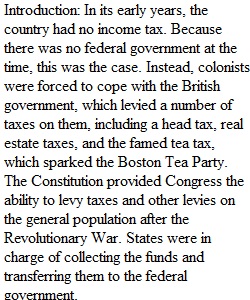


Q Introduction You'll be responding to a Historical Question by providing background context, summarizing Pro and Con arguments and then developing and supporting your own answer. Your topic choices are below the rubric: Directions Your paper should be 2-4 pages long, with the normal 12 font, 1 inch margins, etc. Use MLA citations (2 to 4) to document your sources (search for at least one primary and one secondary source beyond the secondary source provided. Yes, you may use it as a secondary source. There are some primary sources listed at the end of each topic background paper). Grading Criteria • Intro /Thesis (up to 5 points) o Responds to the prompt with a historically defensible thesis/claim that establishes a line of reasoning. The thesis must make a claim that responds to the prompt rather than restating or rephrasing the prompt. The thesis must consist of one or more sentences. • Provide Context (up to 5 points) o Describe a broader historical context relevant to your prompt. The response must relate the topic of the prompt to broader historical events, developments, or processes that occur before, during, or continue after the time frame of the question. These points are not awarded for merely a phrase or reference. • Provide Evidence (up to 10 points) • o You are supporting your argument in response to the prompt using specific and relevant examples of evidence. The response must include 2-3 sources that you include and cite using MLA format. • Analysis and Reasoning (up to 5 points) o Demonstrate a complex understanding of the historical development that is the focus of the prompt, using evidence to corroborate, qualify, or modify your argument that addresses the question. This can be accomplished in a variety of ways, such as: ? Explaining nuance of an issue by analyzing multiple variables ? Explaining both similarity and difference, or explaining both continuity and change, or explaining multiple causes, or explaining both causes and effects ? Explaining relevant and insightful connections within and across periods ? Confirming the validity of an argument by corroborating multiple perspectives ? Qualifying or modifying an argument by considering diverse or alternative views or evidence ? Analysis and Reasoning must be part of the argument, not merely a phrase or reference. Topics to Choose from: Meat Packing Industry.pdfDownload Meat Packing Industry.pdf Income Tax.pdfDownload Income Tax.pdf Scopes Trial.pdfDownload Scopes Trial.pdf Marshall Plan.pdfDownload Marshall Plan.pdf Little Rock Integration Crisis.pdfDownload Little Rock Integration Crisis.pdf How to Submit To submit this assignment, click the Submit Assignment button at the top-right of the page. This may be a text entry or file upload Helpful Resource: Canvas Student Guide: How to Submit an AssignmentLinks to an external site. ________________________________________ Rubric Assignment Rubric (2) Assignment Rubric (2) Criteria Ratings Pts This criterion is linked to a Learning OutcomeAnswered all parts of the question 5 pts All parts 2.5 pts Some parts 0 pts Did not answer 5 pts This criterion is linked to a Learning OutcomeEvidence of Critical Thinking 5 pts Well-developed ideas 2.5 pts Partially Developed ideas 0 pts Did not develop any ideas 5 pts Total Points: 10 PreviousNext
View Related Questions